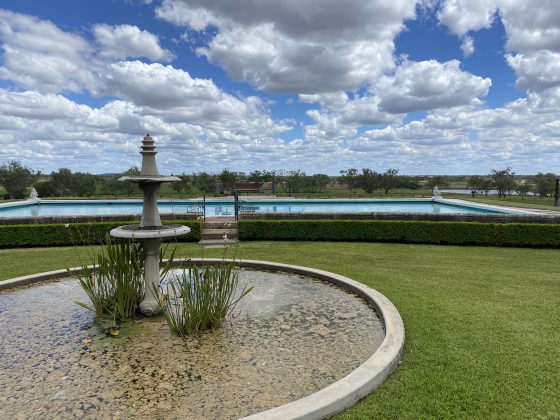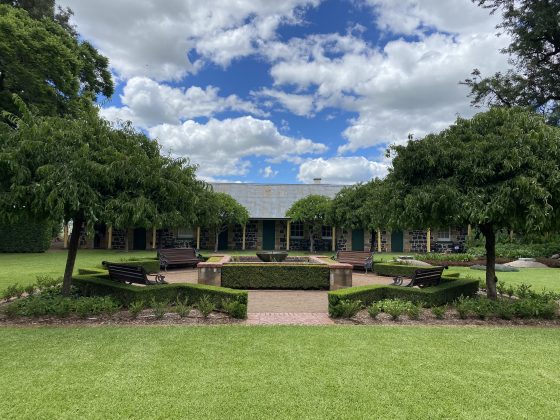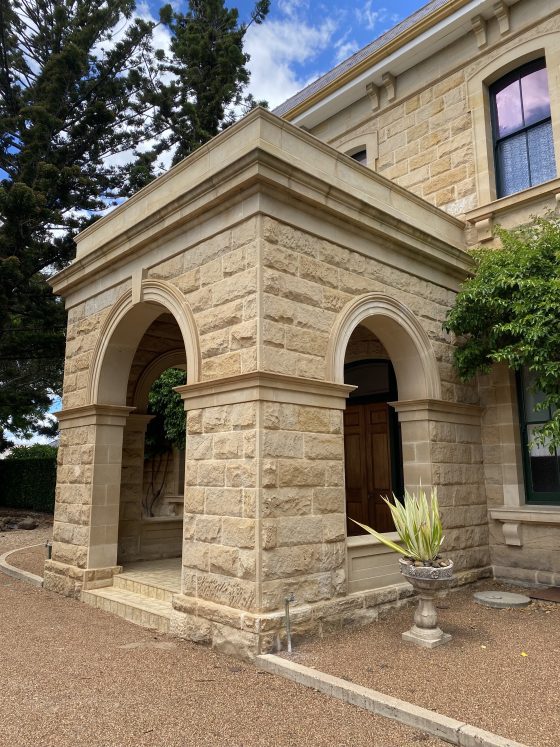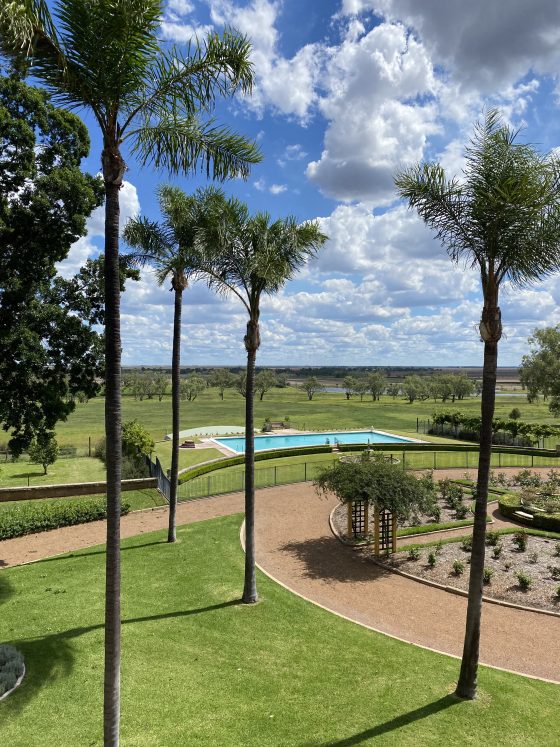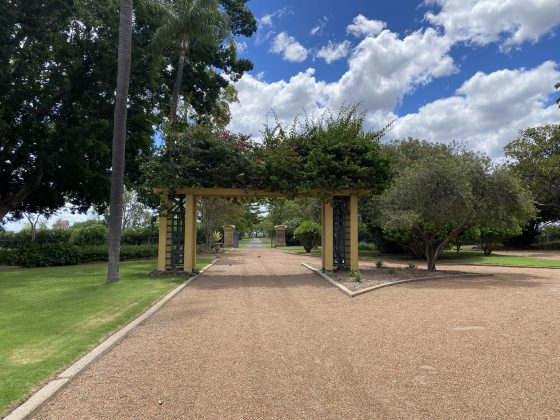I was starting a new gig in a week’s time and wanted a short getaway. I Googled flights from my hometown of Brisbane, but everything would take a day to get there and back and I needed somewhere I could quickly escape.
A hairdresser had once told me about the historic home of Jimbour, 30 minutes from Dalby, another two-and-a-half hour’s drive west from Brisbane. As he blow-dried my hair, I looked at pictures of Jimbour on my phone. “You can’t go in,” he told me, “but you can walk around the grounds and it’s beautiful.” I decided to go and see it for myself.
On the drive west to Dalby, I stopped at op shops along the way and in the evening ate honey shrimp at the local Chinese restaurant. In the morning, I went to the Dalby Pioneer Park Museum – a series of wooden buildings filled with domestic objects from the past: fridges, washing machines, wedding dresses, Australian army equipment. An attendant at the park told me the flies were especially bad at Jimbour. So I stopped by a camping supplies store in town and purchased a net worn over my sun hat.
Google Maps directed me through the town of Jimbour and to the homestead. It had recently rained in this part of Queensland so the fields, either side of me, were luminous and green. Apart from a worker’s utility vehicle, my car was the only one parked near Jimbour’s water tower (that originally pumped water to the main house – the first of its kind in Queensland). It was incredibly still and quiet. Just the occasional low buzz of a passing motor car in the distance.
From the car spot, I walked past the chapel and then down a jacaranda lined avenue arriving at the house side on. At the front of the stately home is a large swimming pool and gardens and hedgerows in a semi-circle. On the other side of the building, is an overgrown kitchen garden and some outdoor sheds that had pictures and plaques detailing the property’s ownership.
Jimbour is one of Queensland’s great pastoral estates. The property was purchased in 1844 by Jim Bell, who bought it from a Scotsman who went broke from the collapse of the Bank of Australasia. Work on Jimbour house commenced in 1874. Later my friend Rachel told me her great-grandfather was a stonemason on Jimbour. At the peak of construction there were 200 workers on site.
By 1925, ownership of Jimbour had transferred to the Russell family. The house was repaired and formally reopened with a party and fundraiser for the nearby Dalby hospital. There’s a black-and-white photo in the sheds of the gathering where Champagne was served, and brightly coloured Chinese lanterns were used to light the avenue to the house.
Of course, as I explored the grounds, I posted to Instagram Stories and back in the hotel room at night friends messaged me: OMG it’s the house from Return to Eden! – a campy 1980s Australian mini-series. Spoiler alert: in the final scene, heart-throb James Reyne is eaten by a crocodile in Jimbour’s pool. A makeup artist friend told me she had stayed inside the house for a wedding (Jimbour hosts weddings, opera and concerts in its grounds). Another woman at a shop in nearby Bell told me she takes a picnic lunch with her each time she goes to Jimbour – just because it’s so beautiful and peaceful and needs to be savoured. She’s right. The estate is a stunning middle of nowhere surprise.
Postscript: Since this story was written Jimbour now offers tours of its grand interior. Tours can be booked online. Highly recommend a cheese platter to finish the tour.



